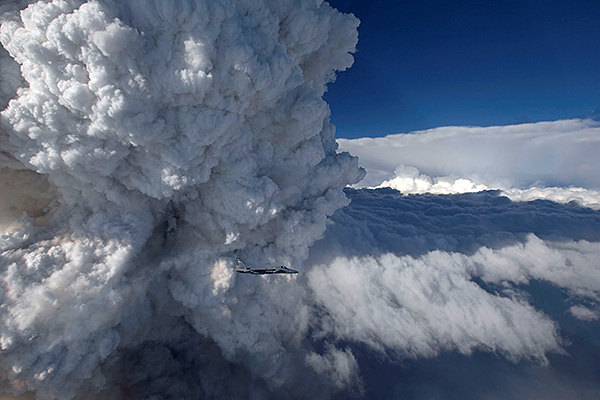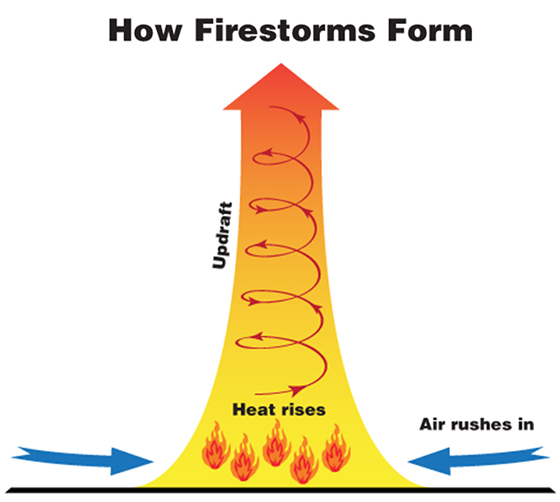
In another EarthDate, we talked about ways to prevent wildfires. Now, we’ll talk about what’s encouraging them.
In a warming climate, the air holds more moisture. It draws more water from plants, making them drier and more combustible.
Summers become longer, which extends the fire season and gives fire-prone lands more chances to burn.
Expanding development also puts more people in fire zones. Human activity starts four out of five fires, which increases burned areas sevenfold.
Drought across the West, intensified by development and agricultural water use, makes fires more likely.
But one of the strongest contributors to fires are fires themselves.
Wildfires, it turns out, can make their own weather—which causes them to spread.
Two of California’s biggest fires last year produced devastating firestorms.
Towering flames heat the air, creating a rapidly rising updraft, which pulls air into the base of the fire, feeding it with oxygen and increasing the intensity.
These updrafts may eventually spiral into what’s called a fire whirl—essentially a tornado of flames, with winds up to 150 miles an hour.
Meanwhile, smoke fills the air with particulates, on which water vapor can condense, forming thunderheads above fires that can produce lightning and start more fires.
Scientists are now studying fire weather, and re-creating it in lab conditions, to better understand how to control wildfires once they begin.
Background

Synopsis: As the intensity and duration of wildfires increase, fires are increasingly creating their own weather and fanning their own flames. Fire weather during the 2018 Carr Fire, near Redding, California, is an example that fire scientists have studied to prepare for future events.
- Wildfire can spread quickly and erratically, jumping rivers and doubling in size overnight.
- Large fires create their own winds, clouds, and weather—making them even more unpredictable because they fan their own flames.
- In 2018, the Carr Fire started near Redding, California, when the rim of a travel trailer’s flat tire scraped the pavement and threw up sparks in mid-July. Six weeks later, the fire had jumped the Sacramento River, destroying 1,600 buildings and killing 8 people in a 930-km2 (360 mi2, 230,000 acre) area.
- The Carr firestorm produced severe fire weather, including pyrocumulonimbus clouds and a fire whirl with winds of nearly 150 mph, equivalent to an EF3 tornado.
- A firestorm is created when heat rises from a fire and air around the fire rushes into its base, heats up, and rises to form an updraft.
- Under certain conditions, these updrafts can turn into what the U.S. Forest Service calls fire whirls, which are essentially tornadoes of fire.
- As smoke from a raging fire rises, water vapor in the atmosphere condenses on particulates in the smoke to create pyrocumulus (fire) or pyrocumulonimbus (firestorm) clouds that may produce lightning—thus creating additional fire danger.
- Firefighters use numerical models to predict where and how blazes will spread so they can safely deploy personnel and equipment in dangerous terrain and order evacuations of communities under threat in time for residents to escape.
- Fire scientists study the physics of fire development and employ fire-management programs to mitigate future risk.
- Past examples like the Carr Fire are combined with laboratory and field experiments to learn about specific aspects of how fire spreads in forests, in cities, and at the highly unpredictable boundary between these two domains.
- Recent studies of past devastating fires show that fire races uphill through brush on slopes but does not accelerate through brush on flat lands; thus, clearing brush on hillsides for fire prevention is more beneficial.
- Studies of how embers start residential fires show that as they burn, they decrease in size and fall between roof tiles, igniting the wooden decking material below. New construction rules require noncombustible decking coverings to protect houses.

